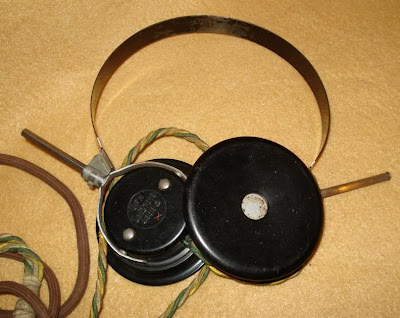
Caro Bill,
FB on your 20mW DSB WSPR DX! I've never actually been on the air
during the upside of a solar cycle. This is wicked exciting!
Thank you for the nice write-up on your Soldersmoke Blog, OM. I heard
back from Fabio this morning; he seems to be as excited as I am
(please see his message below). Italy is my fourth DX contact and
third country with 10mW. Two weeks ago I worked F5NBX twice and FM5LD
once. Again, all great fun...
I'm glad to hear of your interest in the Vladimir Polyakov's mixer. I
can attest to Vlad's claim about its resistance to SWBCI. So far, I've
used silicon and germanium diodes,
MOSFETS, and even a saturating
inductor for the subharmonic, commutating switches.
I haven't mentioned it till now, but leading up to my Gigi
regenerodyne receiver, I built Polyakov reflexed 40m receiver that was
lots of fun. The RF input signal first passed through a simple BPF on
its way to the cathode of a triode, grounded-grid RF amplifer. The
amplified signal next passed through the Polyakov anti-parallel
diodes. The resulting AF signal was then re-injected into the grid of
the same triode (now working as a common-cathode amplifier). In
typical "reflex' fashion, the same tube amplifies first at RF and
again at AF. Looking at my notebook entry, I was able to "plainly
hear" a 1.0uVrms signal and in a week of operation I hadn't noticed
any SWBC breakthrough.
Actually, the subharmonic mixer was well-known by 1976, but I'd
never seen it used by hams at HF until Polyakov popularized the idea.
Our Eastern European comadres took a
liking to it right away but it took some time before it finally caught
on in the West.
By the way, I had a short email exchange with Vladimir a few months
ago. I'm pleased to report he's a really nice fellow. He happened to
mention that his first amateur radio transmitter was built using parts
that he salvaged from an abandoned Wehrmacht tank. It seems radio
components were extraordinarily hard to come by in those days.
Amazing...
Have fun, Bill!
Mike, AA1TJ
---------- Forwarded message ----------
From: Fabio Ventrone
Date: Sat, Mar 27, 2010 at 9:16 AM
Subject: Re: IZ0PEC de AA1TJ/QRPp
To: Michael Rainey
Dear Michael,
Many many compliments for your qrpp station!
Really exciting to have qso in this conditions... It's actually the
first time I can connect qrpp oversea... Unbelievable, something we
can tell our friends forever!!!
I was transmitting with 4 el antenna and something more than 100w.
I will have to take back my 817 and try to call dx as you bravely did!!!
Best 73 qsl
Fabio de IZ0PEC
2010/3/26, Michael Rainey
> Dear Fabio,
>
> Thank you for your patience in copying my signal on 20m CW this evening. I
> had been calling DX stations for several hours but you were the only one to
> answer. My homebrew rig has an output power of only 10mW (0.010 watts). The
> distance between us is 8793km; nearly one million km per Watt!. The antenna
> here is simply an end-fed wire.
>
> I am amazed that you heard my 10mW signal in Rome. It's fantastic!
>
> Again, thank you for patiently listening for my weak signal, OM. It would
> not have been possible without your very kind efforts.
>
> Ciao,
> Mike, AA1TJ


































